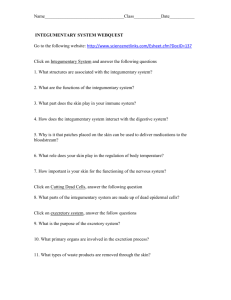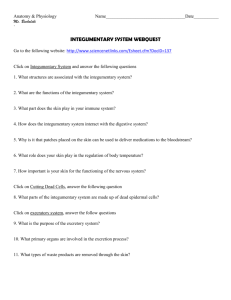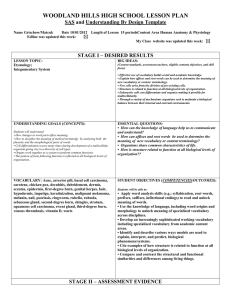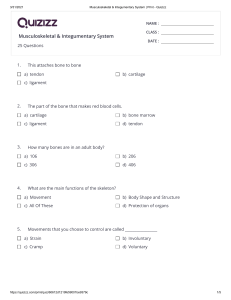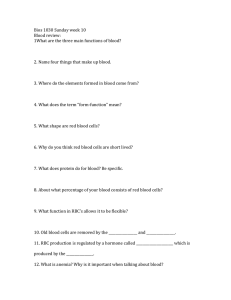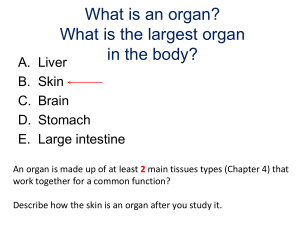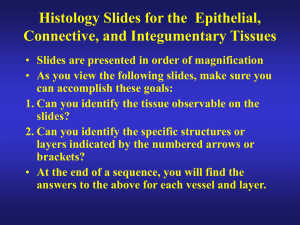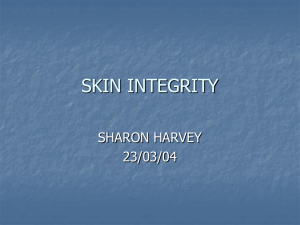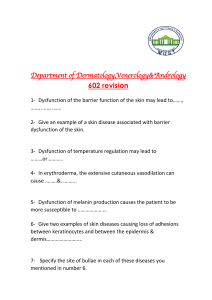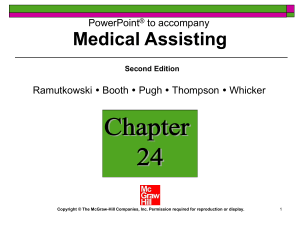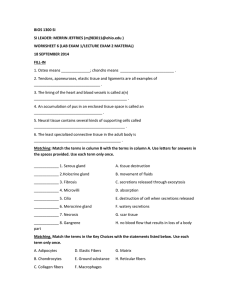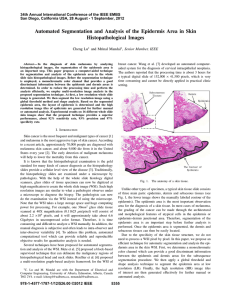Day 1 UNIT 3 Questions
advertisement
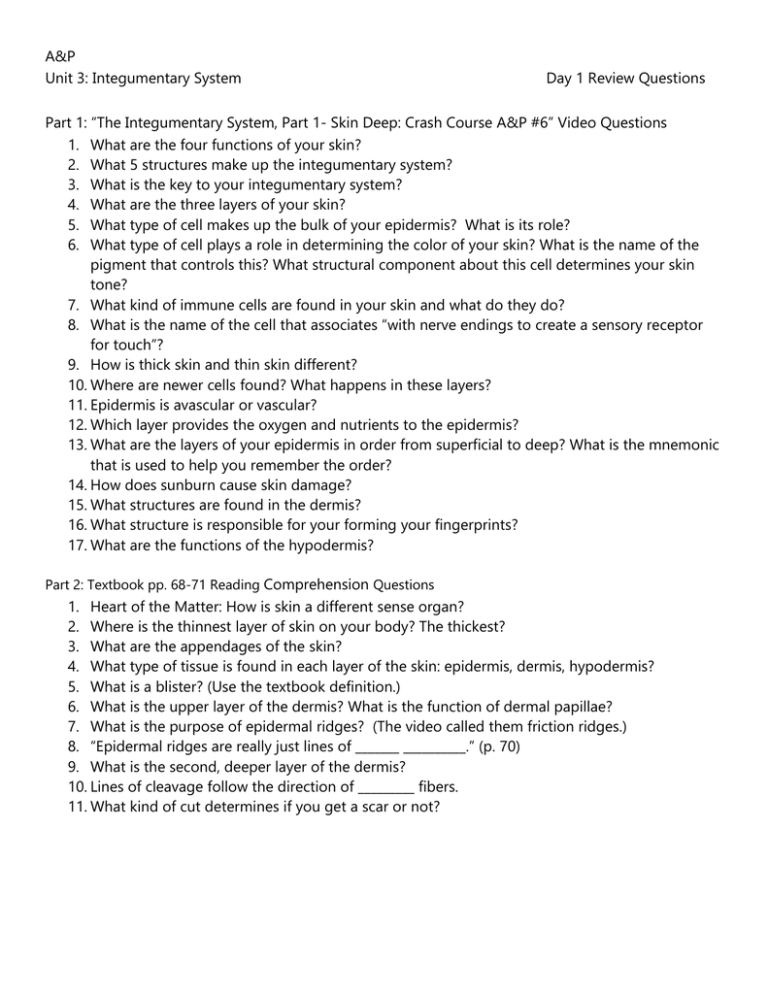
A&P Unit 3: Integumentary System Day 1 Review Questions Part 1: “The Integumentary System, Part 1- Skin Deep: Crash Course A&P #6” Video Questions 1. What are the four functions of your skin? 2. What 5 structures make up the integumentary system? 3. What is the key to your integumentary system? 4. What are the three layers of your skin? 5. What type of cell makes up the bulk of your epidermis? What is its role? 6. What type of cell plays a role in determining the color of your skin? What is the name of the pigment that controls this? What structural component about this cell determines your skin tone? 7. What kind of immune cells are found in your skin and what do they do? 8. What is the name of the cell that associates “with nerve endings to create a sensory receptor for touch”? 9. How is thick skin and thin skin different? 10. Where are newer cells found? What happens in these layers? 11. Epidermis is avascular or vascular? 12. Which layer provides the oxygen and nutrients to the epidermis? 13. What are the layers of your epidermis in order from superficial to deep? What is the mnemonic that is used to help you remember the order? 14. How does sunburn cause skin damage? 15. What structures are found in the dermis? 16. What structure is responsible for your forming your fingerprints? 17. What are the functions of the hypodermis? Part 2: Textbook pp. 68-71 Reading Comprehension Questions 1. Heart of the Matter: How is skin a different sense organ? 2. Where is the thinnest layer of skin on your body? The thickest? 3. What are the appendages of the skin? 4. What type of tissue is found in each layer of the skin: epidermis, dermis, hypodermis? 5. What is a blister? (Use the textbook definition.) 6. What is the upper layer of the dermis? What is the function of dermal papillae? 7. What is the purpose of epidermal ridges? (The video called them friction ridges.) 8. “Epidermal ridges are really just lines of _______ __________.” (p. 70) 9. What is the second, deeper layer of the dermis? 10. Lines of cleavage follow the direction of _________ fibers. 11. What kind of cut determines if you get a scar or not?


